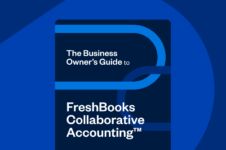Are you struggling to grow your business due to poor cash flow? Don’t worry, there’s a simple solution and it involves managing your days sales outstanding DSO.

You need cash to run your business, cover day-to-day costs, pay staff, and settle loans. Running and growing your business can be difficult when cash flows in slower than it flows out (negative cash flow). This occurs when your accounts receivable balance is too high.
If you’re not careful to maintain a proper accounts receivable process, you may find yourself in financial trouble. That’s not to mention the stress and anxiety it can cause you.
Guess what, though? There’s a solution, and it involves mastering days sales outstanding (DSO). Let’s explore DSO, DSO calculations (a good DSO ratio), why DSO is important, why tracking DSO is important, how to do it, and ways to improve your company’s DSO.
Table of Contents
What Is Days Sales Outstanding?
DSO or days sales in receivable is a fancy accounting word for a calculation that businesses use to estimate how many days – on average – it takes clients to pay their invoices. Days sales outstanding is part of your accounts receivable balance sheet.
It’s a financial ratio that tells you how well you’re managing accounts receivable and is usually calculated monthly so that you collect meaningful data over a specific period.
A lower DSO means you’re collecting balances past due faster, and on the flip side, a higher DSO means you’re collecting payments at a slower rate.
How Do You Calculate Days Sales Outstanding
It’s important to calculate DSO, and you can easily do so using the days sales outstanding formula.
To calculate the DSO ratio, take your total accounts receivable and divide it by your total credit sales, then multiply that by the number of days you’re measuring. This will give you an average DSO over a certain period.
(Accounts receivable ÷ total credit sales) x number of days = standard DSO
In addition to calculating an average DSO on past due accounts, it’s also easy to calculate your best possible low DSO. To calculate your best possible DSO, divide a specific portion of accounts receivable by your total credit sales. Then multiply that number by the number of days you want to measure.
(Current accounts receivable ÷ total credit sales) x number of days = best possible DSO
Remember, a low DSO is better than a high DSO, as it’s a direct reflection of your outstanding receivables over a specified time period. Let’s dig deeper into the numbers.
What Do Days Sales Outstanding Numbers Mean?
After applying the days sales outstanding formula, it’s easy to interpret how delayed payments impact your business.
Higher numbers mean that you have longer average DSO collection periods. However, these numbers are meaningless on their own. They need to be put into context by comparing them to your payment terms, average industry collection times, or maintaining month-over-month comparisons. This type of comparison will help you identify the source of a company’s cash flow problems and allude to how you might improve your collections process.
If your payment terms are 30-days and it’s taking 45 days to get paid, this is a signal that you may need to address your collections process.
The same applies to industry averages. In an article on Inc., Sageworks compiled a list of 10 private companies and their average collection periods. “Foundation, structure, and building exterior contractors” had an average collection period of 67 days. It follows that if you’re in this industry and your DSO number is higher, you need to address it and collect payments sooner.
Why Should You Calculate Days Sales Outstanding?
By tracking these figures monthly, you can identify if they’re increasing over time against your benchmarks and that of the industry.
Constant increases from month to month, especially those that fall out of the benchmarks, indicate that you may have an underlying problem:
- Customers may be unhappy with your services
- You may be targeting customers who aren’t creditworthy and can’t pay you on time
- Your payment terms on your invoices may be too long
- Your billing process may be inadequate with invoices not being sent on time, errors that cause back and forth, and failure to submit late payment reminders.
The point is that you can’t improve what you don’t track. If you don’t know how long it’s taking your customers to pay you, you won’t know that there’s a problem until you no longer have cash on hand.
Collecting cash is tough, and when the cash you’re owed is sitting in a client bank account and not your own, it negatively affects your finances. Until it’s collected, it’s considered lost revenue. But when lines in your accounts receivables remain outstanding for 120+ days, the chances of collecting then drops. This means you’re losing out on pretax income and reinvestment opportunities.
Lost revenue can also hurt your business’s cash flow, causing you to seek outside financing. As you can see, the issue can be compounding as now you’re taking on extra debt, possibly struggling to pay your operational costs, other interest payments may go overdue, and others may come to collect payment from you that has gone into arrears.
How to Better Track (And Improve) the Days Sales Outstanding Ratio
Improving days sales outstanding starts with taking a look at your accounts receivable.
One of the best ways to track accounts receivable is to use cloud-based accounting software. FreshBooks, for example, lets you organize invoices all in one place so you can easily see all outstanding invoices and payments without having to wade through spreadsheets and emails.
You’ll know what invoices you’ve sent and what money’s outstanding. But accounting software such as FreshBooks doesn’t only help improve your DSO ratio through better tracking; it also helps in other ways.
You can use accounting software to:
- Automate your invoicing
- Set up recurring invoices to cultivate the habit of clients paying you at regular intervals
- Reduce errors on your invoices to avoid back and forth between you and your clients, which can delay payment
- Set up subscriptions to accept payment at regular intervals without having to create and send invoices
- Make it easy for clients to pay their preferred way with credit cards and bank transfers, for prompt payment
- Send late automated payment reminders without lifting a finger. This is ideal, especially if you don’t enjoy money talk
Other Solutions to Improve Days Sales Outstanding
Focus on Getting Better Clients
Define your ideal client and be wary of red flags during the interview process. I could’ve avoided such a scenario in my own business had I paid attention when talking to this one client.
The client, an agency, said that they only pay once their clients pay them. After getting swiftly paid for the first invoice, I forgot about this. But as the relationship grew, they started using the excuse: “We’ll pay you when we get paid by our client.”
Payment delays began, and soon payments were delayed for over a month. When you’re used to getting paid within a few weeks and have to wait months, it can cause a severe blow to your cash flow.
Concentrate on the Details of the Invoices You Send
Whether you prefer credit sales or cash sales, make sure you specify the payment terms on your invoice. Avoid ambiguous terms such as “net-30” as it can confuse those who aren’t business-minded.
Also, consider including an incentive, so clients pay you on time. For example, you could give a 5% discount for payment within a few days. Read this article for great tips on how to use your invoice details to your advantage: Use Your Invoice Payment Terms to Get Paid Faster
Invoice Fast and Often
Invoicing as soon as you deliver a product or service will quickly eliminate any time period you’re responsible for adding to your average days sales outstanding. This also puts your invoice into your client’s system sooner, so whatever future date their Accounts Payable run takes place, your invoice will be included.
Request an Upfront Deposit
Upfront deposits make clients vested in the project. They also improve the likelihood that you’ll get the rest of your money, on time, without having to chase a client for payment. Deposits also give you more control of your cash flow problems by reducing the cash burden on your business if you need to purchase supplies to fulfill a customer’s needs.
Days Sales Outstanding Can Be Conquered
Improving your cash flow doesn’t have to be complicated. In fact, by focusing on your days sales outstanding, you’ll have more cash on hand to run a thriving business.
Of course, you can’t improve what you don’t track. That’s why it’s so important that you track your days sales outstanding over a time period against your business terms and industry benchmarks. You’ll then be able to identify problems and find solutions to fix them.
One such solution is FreshBooks.
FreshBooks lets you organize your invoices in one place to see exactly how much money is flowing in and what invoices are outstanding. FreshBooks will also help you understand accounting reports like your balance sheet and income statement.
What’s more, FreshBooks helps you get paid faster, even when making payments isn’t top of mind for your clients. FreshBooks lets your clients pay right on invoices, which gets you paid 2x faster. It also sends out automated late payment reminders for those overdue invoices. Using FreshBooks is the easiest way to improve DSO.

Written by Nick Darlington, Freelance Contributor
Posted on February 13, 2018

 10 Common Invoicing Mistakes You Can Easily Avoid
10 Common Invoicing Mistakes You Can Easily Avoid 12 Silly Invoicing Mistakes That Cloud Accounting Will Save You From
12 Silly Invoicing Mistakes That Cloud Accounting Will Save You From 5 Simple Steps to Getting Better Clients
5 Simple Steps to Getting Better Clients






